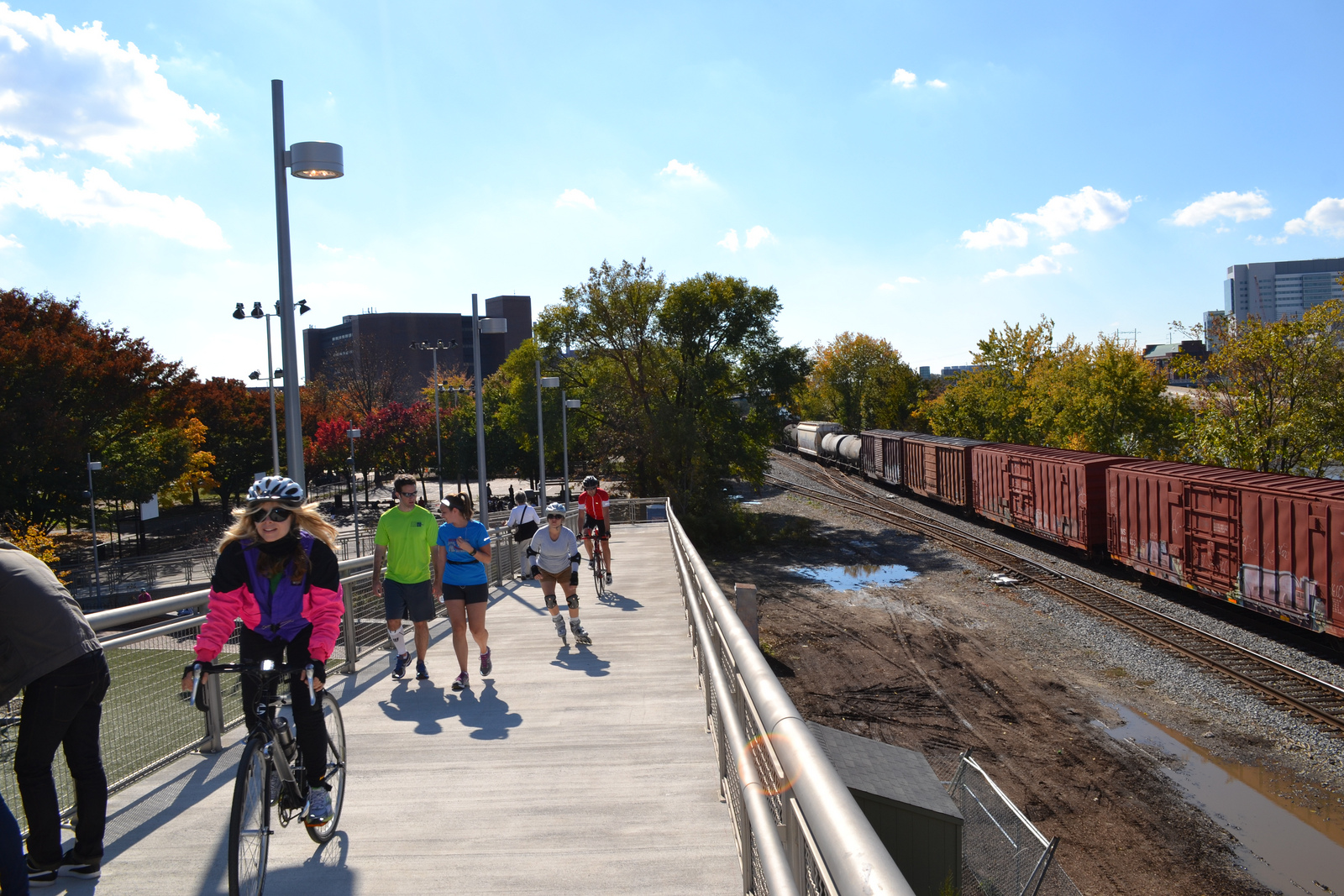Bicycle and pedestrian counters coming to area trails

Anyone who jogs, strolls or rolls on the Schuylkill River Trail or Kelly Drive on a warm, sunny day knows that those trails get a lot of bicycle and pedestrian traffic. But just how many people use the trails? And how much do factors like the bitter temperatures we had this winter or times of day affect usage?
This spring the Delaware Valley Regional Planning Commission (DVRPC) plans to install continuous automated bicycle and pedestrian counters on 12 trails throughout the region in hopes of answering questions like these and making regional data collection more accurate.
The continuous automated counters will differentiate between bicycles and pedestrians and will process data 24-7. The information will be sent to DVRPC in near-real-time, and DVRPC has plans to share the constantly updating counts on a website that is currently in the works.
Not only will the data show how much traffic the trails with the counters get, it will also help DVRPC establish regional specific seasonal adjustment factors. By learning how seasonal changes impact the use of the trails being monitored continuously, DVRPC can estimate the impact of weather on trails where bicycle and pedestrian counts are done on an occasional basis. DVRPC will then be able to take weather into account when projecting the annual use of trails throughout the region.
“There’s a lot of counting that goes on out there, and what we’re hoping to do with this program is to make both our counting and that other counting more robust in its ability to tell us exactly what’s going on in the region,” said Shawn Megill Legendre, a research analyst who has been leading the project at DVRPC.
The hope is that more robust data will help stakeholders including DVRPC, the City and area nonprofits continue to build upon and improve The Circuit, the 750 miles of interconnected bicycle and pedestrian trails that regional advocates are working to build.
“You really can’t improve what you don’t measure so being able to measure bicycle and pedestrian use will certainly help us look at infrastructure in the region and ask questions about, is this infrastructure meeting the needs of the region?” Legendre said.
DVRPC will install four counters in Philadelphia, but the exact locations of the counters are still being sorted out.
The city, through the Department of Parks & Recreation, has been using its own continuous counters since 2008 at points along the Manayunk Towpath, Boathouse Row, Schuylkill Banks Trail, Grays Ferry Crescent and the MLK Drive recreation path. Those counters, though, do not differentiate between bicycles and pedestrians, and they are not able to send data wirelessly. Instead the data must be pulled manually.
Parks & Recreation uses the data internally to inform its management and to apply for trail funding. The department also shares the data with partners like DVRPC and area nonprofits.
“I’m always stunned at the numbers,” said Rob Armstrong, preservation and capital projects manager at Parks & Rec. “We’re talking thousands of people per day on Schuylkill Banks. You kind of know that when you’re on it, but you don’t really know it, you think maybe this is just a busy time.”
After such a brutal winter, Armstrong said, “I think once we get higher temperatures, especially because it’s been such a rough winter, I think people are going to be out on the trails en masse.”
WHYY is your source for fact-based, in-depth journalism and information. As a nonprofit organization, we rely on financial support from readers like you. Please give today.




